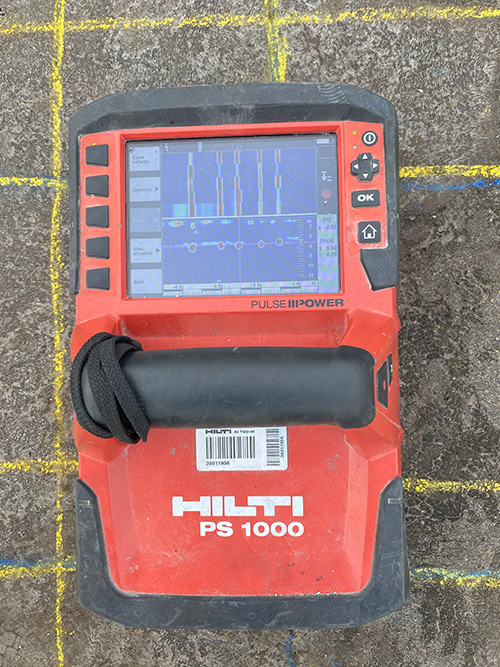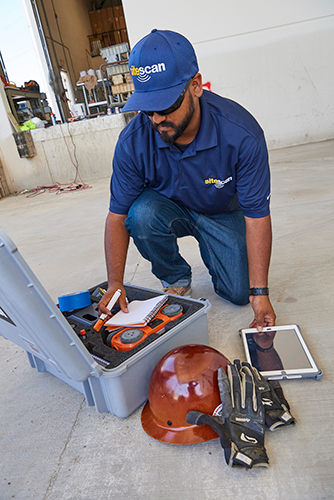Reveal the Transformative Power of Concrete Scanning in Optimizing Effectiveness and Security
Concrete scanning has emerged as an important tool in the building industry, supplying exceptional benefits in improving task effectiveness and ensuring security criteria. The transformative power of concrete scanning lies in its capacity to provide thorough insights and real-time data, reinventing exactly how tasks are planned and implemented.
Relevance of Concrete Scanning
Making sure the structural stability and safety and security of building and construction projects begins with the vital step of performing extensive concrete scanning. Concrete scanning is a non-destructive approach utilized to identify and map subsurface elements within concrete structures.
In addition, concrete scanning assists in enhancing job timelines and budget by avoiding unanticipated expenses and delays that might occur due to unforeseen obstructions within the concrete. Eventually, spending in thorough concrete scanning is a positive approach that enhances both effectiveness and safety in building and construction projects.
How Concrete Scanning Functions
Concrete scanning runs as a crucial device in building projects by employing sophisticated modern technologies to discover and map subsurface aspects without creating structural damage. Ground Penetrating Radar (GPR) and Electromagnetic Induction (EMI) are 2 main approaches used in concrete scanning.
During the scanning procedure, the data collected is examined in real-time, allowing prompt recognition of possible hazards or barriers under the surface area. This information help in decision-making, making sure that building activities continue securely and efficiently. In addition, 3D imaging software program can be used to produce topographic maps of the subsurface aspects, additionally improving task planning and execution. By employing these innovative modern technologies, concrete scanning substantially decreases the danger of costly damages and injuries on construction websites.
Advantages of Concrete Scanning
One of the key benefits of concrete scanning is the ability to spot and find ingrained items such as rebar, post-tension cable televisions, and avenues properly. Concrete scanning helps in preparation and designing more successfully, as it offers exact details concerning the place and depth of architectural parts.

Study: Concrete Scanning Success

In an additional case, a building firm utilized 3D concrete scanning to evaluate the moved here problem of maturing concrete structures in a historic structure. The thorough Get More Info scans offered useful understandings right into the extent of degeneration and aided prioritize maintenance initiatives effectively. By proactively attending to areas of problem identified via scanning, the company was able to expand the life-span of the structure and make sure occupant safety and security.
These instance researches underscore the transformative power of concrete scanning in improving effectiveness, accuracy, and security in building and construction tasks.
Implementing Concrete Scanning in Projects
Implementing advanced scanning technologies during construction tasks has actually come to be increasingly essential for enhancing precision and safety. By incorporating concrete scanning right into job preparation and implementation, building teams can determine prospective dangers, such as rebar or post-tension cords, concealed within concrete structures. This positive method lessens the danger of accidents, delays, and pricey rework, inevitably causing a lot more effective job timelines and budgets.
To execute concrete scanning efficiently, project managers should team up very closely with seasoned scanning experts to identify the most suitable scanning techniques for the specific project demands. Engaging scanning experts from the onset of a task allows the team to produce detailed scanning plans that resolve key areas of concern and make sure complete information collection.
Furthermore, integrating concrete scanning right into routine project operations can improve decision-making procedures, as real-time check data gives instant understandings right into the problem of concrete frameworks - Concrete Scanning. This data-driven strategy helps with educated analytic and allows teams to make modifications quickly, fostering a society of effectiveness and safety throughout the job lifecycle

Conclusion
Finally, concrete scanning plays a critical role in enhancing effectiveness and security in building and construction jobs. By making use of sophisticated technology to map and spot out underlying structures more info here within concrete, this procedure helps to stop expensive errors, make certain architectural honesty, and minimize threats on site. With the ability to reveal hidden elements and provide accurate information, concrete scanning confirms to be a useful tool for enhancing task outcomes and making best use of overall success.
Concrete scanning is a non-destructive approach used to identify and map subsurface components within concrete frameworks. Additionally, concrete scanning assists in enhancing job timelines and budget plan by avoiding unexpected costs and delays that might arise due to unexpected blockages within the concrete. One noteworthy instance research study entails a large improvement project where concrete scanning played an important function in making sure task success.In an additional instance, a building and construction company utilized 3D concrete scanning to analyze the problem of aging concrete frameworks in a historical structure. By incorporating concrete scanning right into task planning and execution, building and construction teams can determine prospective hazards, such as rebar or post-tension cables, hidden within concrete structures.
Comments on “Boost Construction Safety with Professional Concrete Scanning”